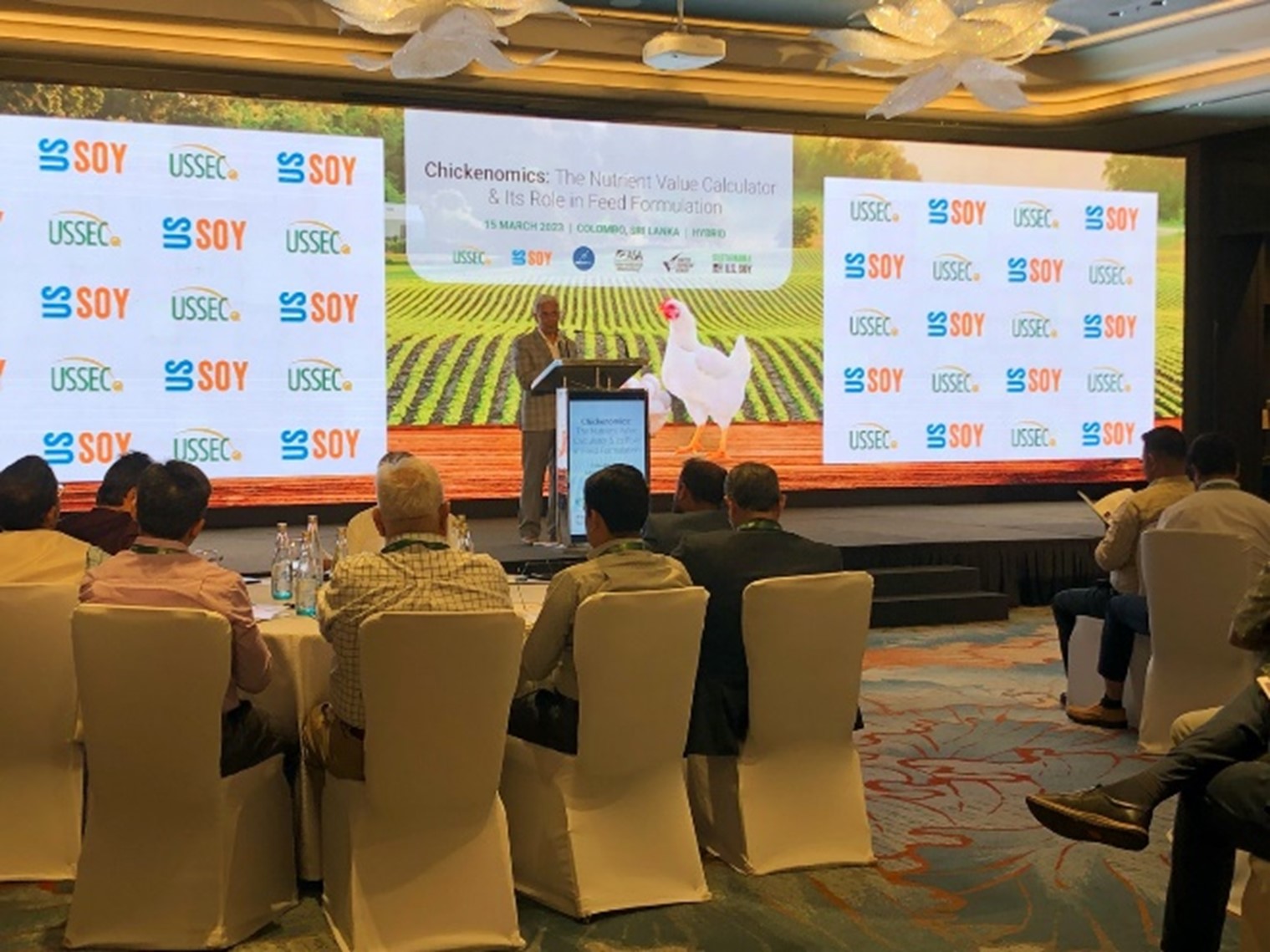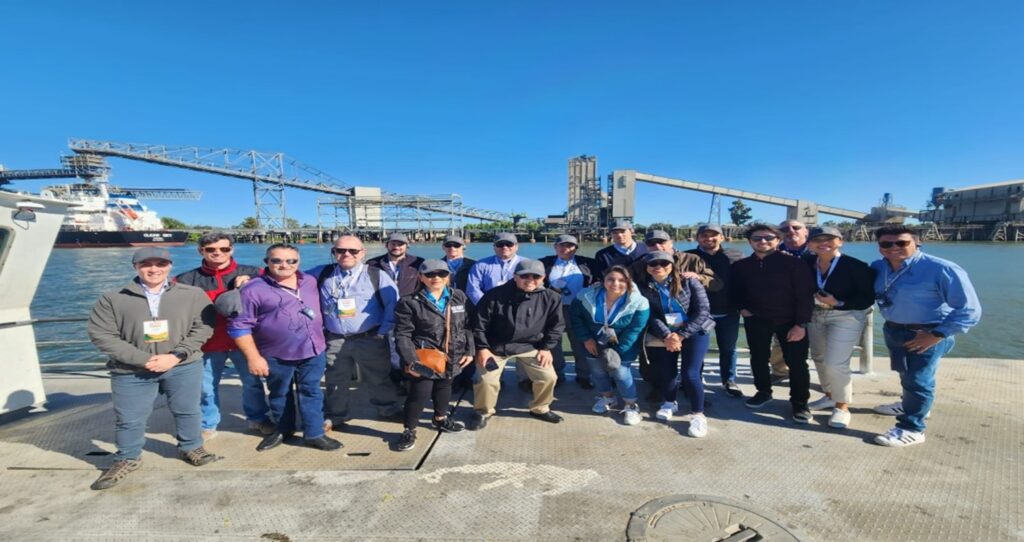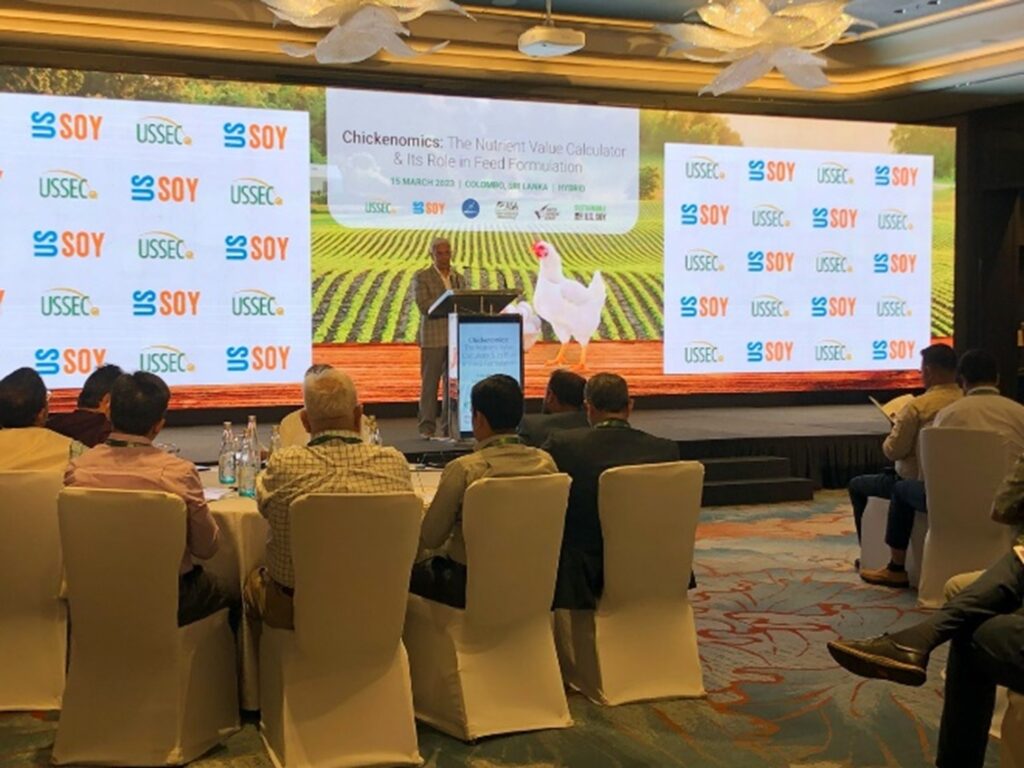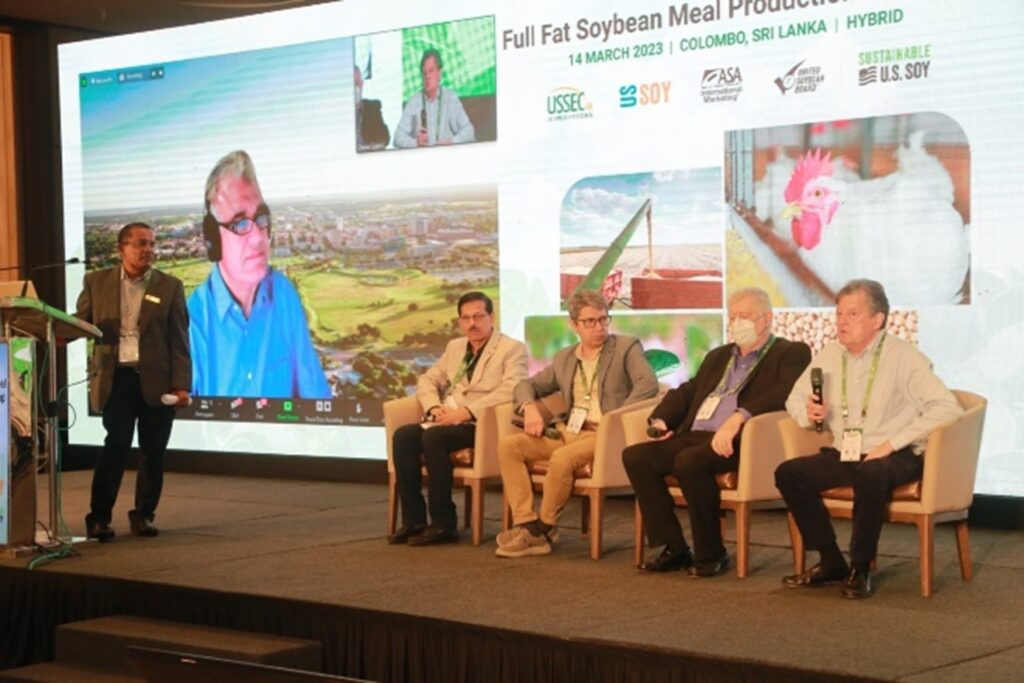
Livestock producers worldwide rely on soybean meal as a protein source for feed rations. USSEC emphasizes the added intrinsic value they can realize from soybean meal derived from U.S. soybeans.
“Our team highlights how soybean meal can offer even more than its comprehensive nutritional bundle for livestock feed,” says Thomas D’Alfonso, PhD., USSEC director of animal and aquaculture. “With soy checkoff support, we demonstrate the logistics, customer-focused education and species-specific training that contribute to growing a preference for U.S. Soy as the origin for soybean meal — often in unexpected regions and industry segments.”
Soybean meal has secured its place as an animal feed ingredient because it delivers essential amino acids like digestible lysine and methionine, along with energy and phosphorus. It has high palatability and digestibility for poultry, swine, fish, cattle and more.
The USSEC team shares innovative ways to take advantage of the quality and amino acid profile of soybean meal from U.S. Soy.
Delivering Nutritional Advantages Everywhere
U.S. infrastructure makes it possible to efficiently deliver soybeans and soybean meal anywhere. For example, a group of soybean buyers from Chile and Ecuador participated in a trade mission to the United States. USSEC shared scientific studies and tools demonstrating the wide range of benefits from soybean meal derived from U.S. Soy with the participating feed and livestock producers.
“Due to their location, most of their soy imports, including soybean meal, come from Argentina,” D’Alfonso explains. “However, these buyers agreed that U.S. Soy delivers more quality. They were pleasantly surprised to also learn about competitive export logistics options.”
He notes that the trade team participants included a major animal integrator from Chile. The company requested a quote for soybean meal shipped through the Pacific Northwest from a U.S. exporter they visited. This direct networking led to negotiations for three shipments of U.S. soybean meal in late 2022 and early 2023, totaling 146,800 metric tons.
“Fostering connections like this creates opportunities to demonstrate the accessibility of U.S. soybean meal and grow demand,” he says.
Exploring Processing Technology
USSEC intentionally responds to customer interests. In response to the growing preference for extrusion technology by the feed industry in South Asia, USSEC hosted a focused workshop on the operational efficiencies of the soybean processing method. More than 130 participants from Bangladesh, India, Nepal, Pakistan, and Sri Lanka learned more about extrusion.
“Educational content focused on types and advantages of extrusion technology for soybean processing, as well as control of anti-nutritional factors and bioavailability of nutrients,” D’Alfonso reports. “One session elaborated how USSEC’s Soybean Value Calculator helps feed producers reduce costs while ensuring use of high-quality soybean meal in animal feeds.”
He notes that events like this share how U.S. soybeans dry naturally in the field during the fall, so they have less moisture content compared to soybeans from other origins. This contributes to the high quality and value of U.S. soybeans.
“Such customized knowledge sharing position U.S. Soy as a preferred and ideal source for feed use,” he says. “In this case, existing and potential customers learned the value of U.S. Soy when using extrusion to produce soybean meal.”
Providing Species-Specific Training
The Soy Excellence Centers offer programs specific to poultry, swine and aquaculture, the species that most commonly eat soybean meal. This training targets early career professionals in emerging markets.
“This curriculum expands the skill sets of professionals in our largest industry segments to help them advance in their careers,” D’Alfonso says. “However, USSEC also takes advantage of opportunities to promote the use of soybean meal for other species.
He cites USSEC participation in the dairy industry road show in Mexico, held during April 2023, as an example. USSEC joined the U.S. Grains Council and other groups to conduct in-person seminars and meetings with more than 200 dairy industry representatives throughout the country.
“The road show gave our team the opportunity to explore the potential interest in incorporating soybean meal and other U.S. Soy products in dairy rations,” D’Alfonso continues. “Based on the market intelligence we gathered, we are developing a strategy to work with the dairy industry in Mexico.”
For example, faculty at the Los Altos Technological Institute and the Antonio Narro University in Northern Mexico expressed interest in USSEC’s Soybean Excellence Center training programs, and the potential for future training on soy products in ruminant diets. Other company contacts expressed interest in additional information and technical support to determine the potential fit for soy in dairy rations.
“As we share the intrinsic and extrinsic value of soybean meal from U.S. Soy, USSEC is developing new markets and strengthening existing markets,” he says. “Our customers are reaping the benefits of the nutritional, logistical and educational advantages it offers.”
This story was partially funded by U.S. Soy farmers, their checkoff and the soy value chain.
# # #

Trade mission participants from Chile and Ecuador visited New Orleans ports to learn about delivery logistics.


A combination of speakers and panel discussions addressed technical issues related to extrusion technology, as well as the value of sourcing soybeans from the U.S. for use in soybean meal, during a USSEC workshop in South Asia.
